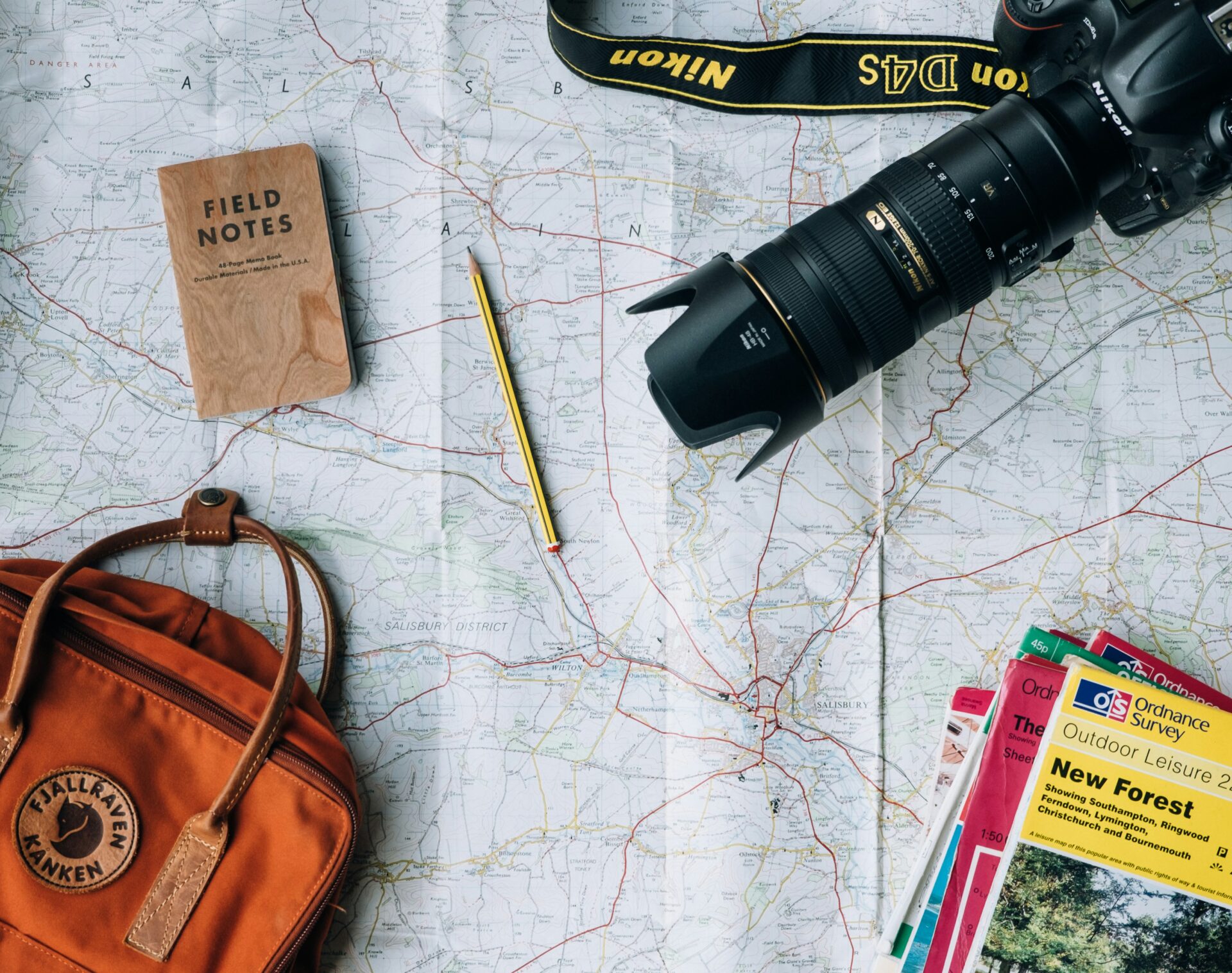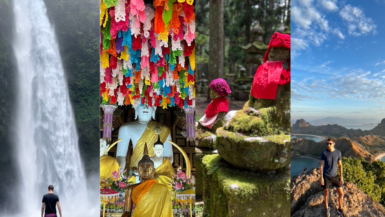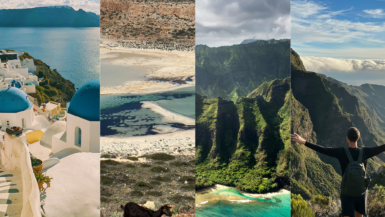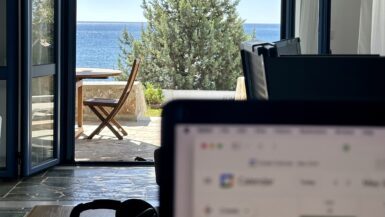Welcome to our journey into slow travel, a way of exploring that goes beyond mere sightseeing. It’s about immersing yourself in the rhythm and heart of a destination. It’s about forming a deeper understanding of its culture and people. I have been slow traveling for more than 3 years now. I know first hand that it is the best way to travel. In this guide, we’ll delve into the essence of slow traveling, uncovering its benefits, from cost savings to richer cultural experiences. Get ready to discover tips and insights that will transform the way you travel. I hope it can make each journey more meaningful and fulfilling for you.
Table of Contents
What is Slow Travel?
Slow traveling is a travel style that emphasizes experiencing a destination more deeply rather than trying to see it all in a hurry. It’s about taking the time to immerse yourself in the local culture. Take the time to connect with people, and appreciate the nuances of a place.
Instead of rushing from one landmark to another, slow travelers often stay in one area longer. This allows them to understand the rhythms of daily life and uncover hidden gems often overlooked by traditional tourists.
This approach creates a more authentic experience. As slow travelers, we get to live like locals, sometimes participating in community activities. We become familiar with the local life and take time to absorb the sights, sounds, and soul of their surroundings. Slow traveling is less about ticking boxes and more about creating meaningful, reflective, and enriching travel experiences.
Benefits of Slow Travel
Slow travel comes with a multitude of benefits that enhance not only the quality of your travel experiences but also your well-being and budget. By embracing a slower pace, you open up a world of advantages that traditional, fast-paced tourism often misses. Here’s a list of the key benefits of slow travel:
- Save Money: Slow travel often means spending less. Staying in one place for longer allows for better deals on accommodation, and you can avoid the costs associated with constantly moving from place to place.
- Less Tiring: By avoiding the rush of trying to see everything, you reduce travel fatigue. It’s a more relaxed and rejuvenating way to travel, giving you time to rest and truly enjoy each experience.
- Deeper Connections with People: Spending more time in one place allows you to connect on a deeper level with locals. These interactions often lead to a more authentic understanding of the culture and community.
- Easier for Those Working Remotely: For digital nomads, slow travel is ideal. It provides stability and the opportunity to establish a routine, making it easier to balance work and exploration.
- The Joy of Doing Something More Than Once: There’s a unique pleasure in revisiting a local hike or eating at the same restaurant multiple times. It allows you to appreciate the nuances and changes, just like a local would.
By adopting a slow travel mindset, you not only enrich your travel experiences but also allow yourself the time and space to appreciate the finer details of the places you visit. It’s a rewarding and sustainable way to explore the world.
Disadvantages of Slow Travel
While slow travel offers numerous benefits, it’s important to acknowledge that it might not be the ideal approach for everyone. Here are some potential disadvantages of slow traveling:
- Can Become Mundane for Those Needing Constant Change: For travelers who thrive on new experiences and constant change, staying in one place for an extended period might become monotonous.
- Takes More Time to See More of the World: Slow travel means you might visit fewer destinations in a given timeframe. If your goal is to see as many places as possible, this approach could feel limiting.
- If a Location is Bad, a Long Stay Isn’t Ideal: Not every destination will resonate with you. In cases where you don’t connect with a place, an extended stay can feel tedious or uncomfortable.
- Longer Stays Often Require Visas: Staying in one country for a long period often means navigating visa requirements, which can be a complex and time-consuming process.
- FOMO of All the Places Left to Travel: Slow travel can sometimes lead to a fear of missing out (FOMO) on other destinations and experiences you could have explored in the same amount of time.
- Other Friends/Travelers May Move at a Quicker Travel Pace: If you prefer traveling with friends or in groups, your slow travel pace might not align with theirs, potentially leading to missed opportunities to travel together.
Understanding these potential drawbacks is crucial in deciding if slow travel aligns with your personal travel style and goals. While it offers a depth of experience, it requires a trade-off in terms of time and variety, which might not suit everyone’s preferences or lifestyle.
Tips for Slow Traveling
Slow traveling is an art that requires a thoughtful approach to truly reap its benefits. Here are some tips to help you make the most out of your slow travel experience:
- Find Monthly Rate Accommodations: Opt for accommodations that offer monthly rates instead of nightly. This not only saves money but also gives you a more stable base from which to explore.
- Travel During Shoulder Season: Traveling during the shoulder season — the period between peak and off-peak seasons — can lead to better rates and fewer tourists, enhancing your experience and connection with the place.
- Engage with Meetup/Nomad Groups: Don’t hesitate to join local meetup or nomad groups. They are great for making friends and finding community, especially when you’re staying somewhere long-term.
- Give Yourself Time to Understand What You Want Out of a Destination: Allow yourself the luxury of time to discover what you truly want from your stay in a destination. This might evolve as you spend more time there.
- Don’t Be Afraid to Revisit Locations: If a place resonates with you, don’t shy away from returning. Familiarity can deepen your appreciation and understanding of a place.
- Embrace Local Routines: Try adopting local routines and habits. This could be as simple as frequenting a local café every morning or participating in community events, helping you feel more like a resident than a visitor.
- Plan for Flexibility: While it’s good to have a plan, be open to changing it. Sometimes the best experiences come from spontaneous decisions or recommendations from locals.
By incorporating these tips into your travel plans, you can enrich your experiences and make your slow travels even more fulfilling. Each place has its own unique rhythm and secrets waiting to be discovered, and slow traveling allows you to uncover these at your own pace.
Conclusion
In conclusion, slow travel isn’t a one-size-fits-all approach, but it certainly suits the digital nomad lifestyle extraordinarily well. It’s an incredibly rewarding way to experience the world, offering a chance to weave the fabric of everyday life into your travel experiences. For me, some of the most cherished memories come not from grand excursions but from the simple routine of visiting local grocery stores, enjoying coffee at the same cafes, and adapting to the rhythms of each new destination.
These moments of ordinary life in extraordinary places are what truly enrich the travel experience. Slow travel allows you to savor these nuances and build a tapestry of authentic experiences. I hope you, too, will find joy in this unique approach to travel and come to treasure the memories of everyday life in the places you visit as much as I do.




